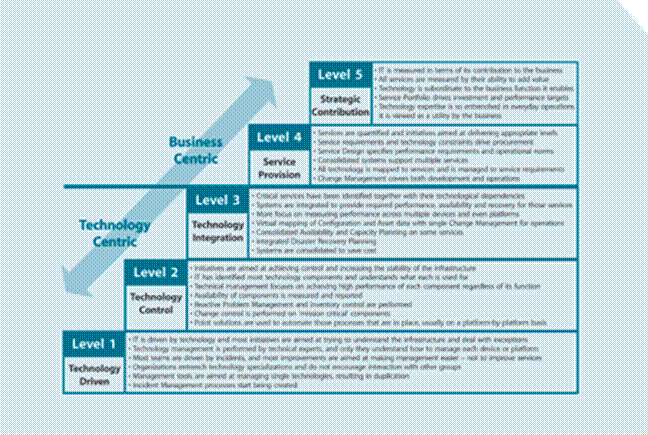
CATEGORIES:
BiologyChemistryConstructionCultureEcologyEconomyElectronicsFinanceGeographyHistoryInformaticsLawMathematicsMechanicsMedicineOtherPedagogyPhilosophyPhysicsPolicyPsychologySociologySportTourism
Common Service Operation activities
Chapter 4 dealt with the processes required for effective Service Operation and Chapter 6 will deal with the organizational aspects. This chapter focuses on a number of operational activities that ensure that technology is aligned with the overall Service and Process objectives. These activities are sometimes described as processes, but in reality they are sets of specialized technical activities all aimed at ensuring that the technology required to deliver and support services is operating effectively and efficiently.
These activities will usually be technical in nature – although the exact technology will vary depending on the type of services being delivered. This publication will focus on the activities required to manage IT.
Important note on managing technology
It is tempting to divorce the concept of Service Management from the management of the infrastructure that is used to deliver those services.
In reality, it is impossible to achieve quality services without aligning and ‘gearing’ every level of technology (and the people who manage it) to the services being provided. Service Management involves people, process and technology.
In other words, the common Service Operation activities are not about managing the technology for the sake of having good technology performance. They are about achieving performance that will integrate the technology component with the people and process components to achieve service and business objectives. See Figure 5.1 for examples of how technology is managed in maturing organizations.

Figure 5.1 Achieving maturity in Technology Management
Figure 5.1 illustrates the steps involved in maturing from a technology-centric organization to an organization that harnesses technology as part of its business strategy. Figure 5.1 further outlines the role of Technology Managers in organizations of differing maturity. The diagram is not comprehensive, but it does provide examples of the way in which technology is managed in each type of organization. The bold headings indicate the major role played by IT in managing technology. The text in the rows describes the characteristics of an IT department at each level.
The purpose of this diagram in this chapter is as follows:
- This chapter focuses on Technical Management activities, but there is no single way of representing them. A less mature organization will tend to see these activities as ends in themselves, not a means to an end. A more mature organization will tend to subordinate these activities to higher-level Service Management objectives. For example, the Server Management team will move from an insulated department, focused purely on managing servers, to a team that works closely with other Technology Managers to find ways of increasing their value to the business.
- To make and reinforce the point that there is no ‘right’ way of grouping and organizing the departments that perform these services. Some readers might interpret the headings in this chapter as the names of departments, but this is not the case. The aim of this chapter is to identify the typical technical activities involved in Service Operation. Organizational aspects are discussed in Chapter 6.
- The Service Operation activities described in the rest of this chapter are not typical of any one of the levels of maturity. Rather, the activities are usually all present in some form at all levels. They are just organized and managed differently at each level.
In some cases a dedicated group may handle all of a process or activity while in other cases processes or activities may be shared or split between groups. However, by way of broad guidance, the following sections list the required activities under the functional groups most likely to be involved in their operation. This does not mean that all organizations have to use these divisions. Smaller organizations will tend to assign groups of these activities (if they are needed at all) to single departments, or even individuals.
Finally, the purpose of this chapter is not to provide a detailed analysis of all the activities. They are specialized, and detailed guidance is available from the platform vendors and other, more technical, frameworks; new categories will be added continually as technology evolves. This chapter simply aims to highlight the importance and nature of technology management for Service Management in the IT context.
Date: 2014-12-29; view: 1745
| <== previous page | | | next page ==> |
| Availability Management | | | Definitions |